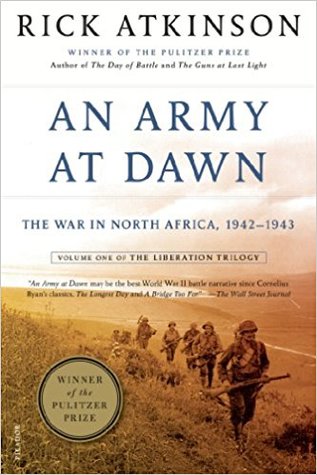More on this book
Community
Kindle Notes & Highlights
The liberation of western Europe is a triptych, each panel informing the others: first, North Africa; then, Italy; and finally the invasion of Normandy and the subsequent campaigns across France, the Low Countries, and Germany.
celerity,
It is where most of the West’s great battle captains emerged, including men whose names would remain familiar generations later—Eisenhower, Patton, Bradley, Montgomery, Rommel—and others who deserve rescue from obscurity.
poltroons
It was the first of 950 personal messages Churchill would send Roosevelt in the most fateful correspondence of the twentieth century.
Charles André Joseph Marie de Gaulle,
By war’s end the United States had sent its allies 37,000 tanks, 800,000 trucks, nearly 2 million rifles, and 43,000 planes—so many that U.S. pilot training was curtailed because of aircraft shortages.
Luftwaffe
Two
Moreover, on January 1, 1942, twenty-six countries calling themselves the “united nations” signed an agreement to forswear any separate peace without mutual concurrence and to make a common cause of “life, liberty, independence, and religious freedom, and to preserve the rights of man and justice.”
obdurate
Tobruk
After informing both Churchill and his own senior military advisers on July 25 that he intended to invade North Africa, he slammed the door on further discussion. At 8:30 P.M. on Thursday, July 30, he summoned his lieutenants to the White House and announced that, as he was commander-in-chief, his decision was final. North Africa was “now our principal objective.”
The president had made the most profound American strategic decision of the European war in direct contravention of his generals and admirals. He had cast his lot with the British rather than with his countrymen. He had repudiated an American military tradition of annihilation, choosing to encircle the enemy and hack at his limbs rather than thrust directly at his heart. And he had based his fiat on instinct and a political calculation that the time was ripe.
Cherbourg
Rear Admiral Henry Kent Hewitt
bifurcate
Baedekers,
Norfolk


